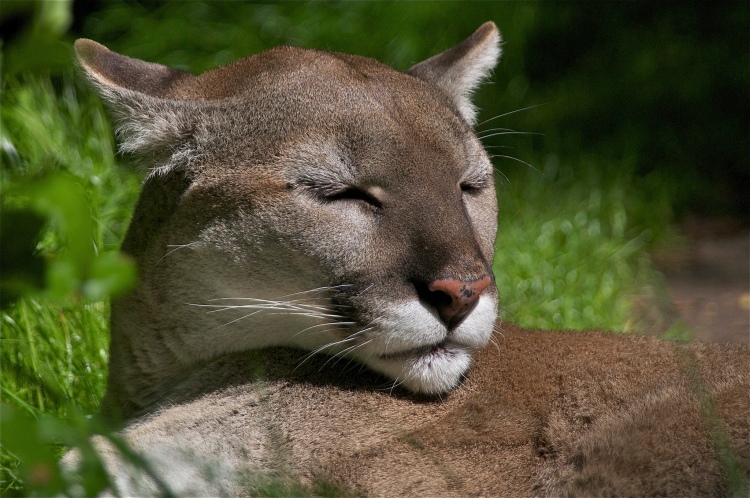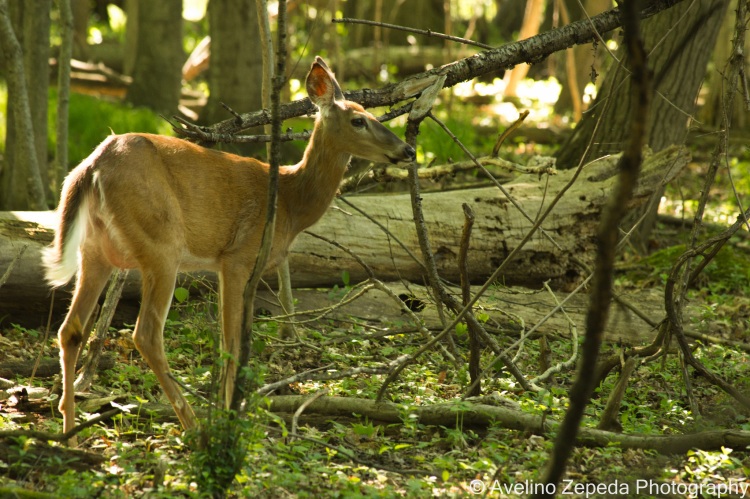
Many months ago, I wrote a post about the remarkable journey of the Connecticut Cat: a mountain lion (Puma concolor; cougar; puma), that traveled over 2,700 km from the Black Hills in South Dakota to Milford, Connecticut.1 This cat’s extraordinary story begs the question, might other mountain lions also be moving east?
The short answer is yes. Recall that European settlers to North America subjected mountain lions to high levels of persecution, with individual states paying out bounties for dead mountain lions and the federal government (via the Biological Survey) attempting to exterminate a wide range of predatory animals.2 This persecution, combined with the overhunting of mountain lions’ prey, led to the cats’ extirpation (local extinction) in the eastern two-thirds of North America in the early 1900s – save Florida.

Then in the 1990s, mountain lions began to establish breeding populations east of their remaining range, starting with the Black Hills of South Dakota. The cats continued to move east, adding North Dakota and Nebraska to the list of recolonized states in 2005.3
The Cougar Network, an organization dedicated to studying Puma concolor, has been keeping tabs on mountain lion occurrences east of the Rocky Mountains. According to them, mountain lion confirmations in the Midwest have been increasing since 1990.4 In 2017, the Missouri Department of Conservation (MDC) obtained DNA evidence of a female mountain lion in the state.5 When one puts all of these facts together, it is clear that mountain lions are beginning to reclaim their lost territories.
But if you dwell in the Eastern U.S., do not expect to see mountain lions turning up anytime soon. While subadult, male mountain lions can disperse over hundreds – even thousands – of kilometers as they search for a territory of their own, females tend to stay closer to home. However, this is not a hard rule, because female mountain lions occasionally disperse over long distances as well.6 Another noteworthy factor is that mountain lions are subjected to sport hunting almost wherever they occur in the U.S., except for California.
Female mountain lions’ habits of staying close to their natal (home) ranges, along with sport hunting, mean that the cats’ eastward expansion is going to take time.

LaRue and Nielsen (2016) sought to determine how much time it would take mountain lions to recolonize the Midwest. Using known information about cougar dispersal rates, suitable habitat patches in the Midwest, current hunting levels, and more, they modeled mountain lion range expansion in two scenarios: no sport hunting and sport hunting.
The scientists concluded that in the no-hunting scenario, all eight large habitat patches in the Midwest would have breeding populations of mountain lions after 25 years.
The results were slightly different for the hunting scenario. When averaging across all the trial runs of their model, LaRue and Nielsen (2016) predicted that the large habitat patch in Wisconsin would not have any female mountain lions after 25 years; the North Dakota, Minnesota, Black Hills, Missouri, and Ozarks patches would all have just one female. The Nebraska and Ouachita habitat patches were predicted to have 26 and four female mountain lions after 25 years, respectively.7
Thus, while it might take a few decades, mountain lions will eventually return to the Midwestern U.S. – and probably the East as well. Rather than being a cause for alarm, this is a good thing. Large predators are integral parts of healthy ecosystems, helping to control large herbivore and mesocarnivore (medium-sized carnivores) populations through direct hunting and fear.8

To emphasize this point, Gilbert et al. (2016) modeled what would happen if mountain lions recolonized the Eastern U.S. They concluded that the cats would reduce deer-vehicle collisions by 22% within 30 years, preventing 155 human deaths, 21,400 injuries, and saving $2.13 billion. In other words, mountain lions would save five times as many human lives as they would take each year.
In light of the evidence for mountain lion range expansion, wildlife managers in Midwestern states should engage in preemptive educational campaigns: initiating honest conversations about the risks and benefits of living with mountain lions, and explaining how to remain safe in their presence. By doing so, they can help Midwestern residents learn how to live responsibly alongside mountain lions.
They are so beautiful… Thank you dear Josh, Love, nia
LikeLiked by 1 person
Thank you, Nia! Pumas certainly are beautiful creatures. Let’s hope their comeback in the Midwestern and Eastern U.S. continues.
LikeLiked by 1 person
Such beautiful cats. It’s a shame that humans have abused this planet for far too long. But, it’s still not too late to each play our part. As always, thank you for sharing such fascinating information with such care.
LikeLiked by 2 people
I’m glad you liked the post! Fortunately, in some cases in the U.S. we’re seeing that when given the chance, some animals can make remarkable comebacks. Let’s hope that pattern continues.
LikeLiked by 1 person
Great blog post Josh! I’m glad you returned to the cougar topic- I think it helps people relate big cat conservation to their lives in an unexpected way. I didn’t know that fear of predators can control species like raccoons either. That’s a fascinating study! And just another reason why it’s important to educate people about wildlife. Cheers
LikeLiked by 1 person
Thanks Jess! I was just about to send you an email to tell you that I’ve continued our little cougar series. Sorry I didn’t get to it earlier; my thesis got in the way of writing highly-involved posts like this one.
I hope these cougar posts will help people to think about mountain lions more positively – especially in the Midwest and East. I won’t deny that mountain lions can be dangerous to humans and domestic animals, but the benefits of their presence outweighs the risks. Besides, there are simple steps people can take to make it easier to coexist with mountain lions.
LikeLiked by 1 person
We have them at The Holler, but we only see tracks and kill sites, never them, elusive beauties!
LikeLiked by 1 person
That’s what a lot of people don’t get about living with mountain lions, it’s almost always a non-issue; one hardly even sees them. There are also relatively simple steps people can take to reduce their chances of an attack even further, such as keeping dogs on leashes and keeping an eye on one’s children/pets while outdoors.
LikeLiked by 1 person
So cute.
Why can’t people see it from the angle that having an increased population of these animals would be of great benefit to them. As human beings we take too many things for granted.
LikeLiked by 1 person
Yes, we certainly do take many things for granted. There will be some risks involved in having mountain lions back in the heavily-populated eastern United States, but the benefits will be worth it – especially if we take steps to prepare for the cats’ return.
LikeLiked by 1 person
I reckon it’s one of those the risk is totally worth it kind of situations.
LikeLiked by 1 person
It seems that way!
LikeLiked by 1 person
I recently was walking the dogs and my larger dog flushed up a bobcat and strangely was chasing it in circles – usually the bobcat simply exits the area. Then, I spotted a powerful Mountain Lion exiting the area of the activity. He was huge and muscular and looked back at me over his shoulder. I was 30 feet away. I suspect he might have been stalking the bobcat. This being only a block from my home across a golf course came as a surprise to me, although back yard cameras have been having sightings for years already. Fires to the North and East of us over recent years likely caused some cats to move into our area where there’s a population of deer, javelina and coyotes to feed them forever but where they live in closer proximity to us humans.
LikeLiked by 1 person
Hi Dennis, that’s an incredible story! I wonder how increasingly wildfires will affect wildlife populations, especially wildlife-human encounters. Perhaps more people have noticed changes in wildlife behaviors following fires?
LikeLike